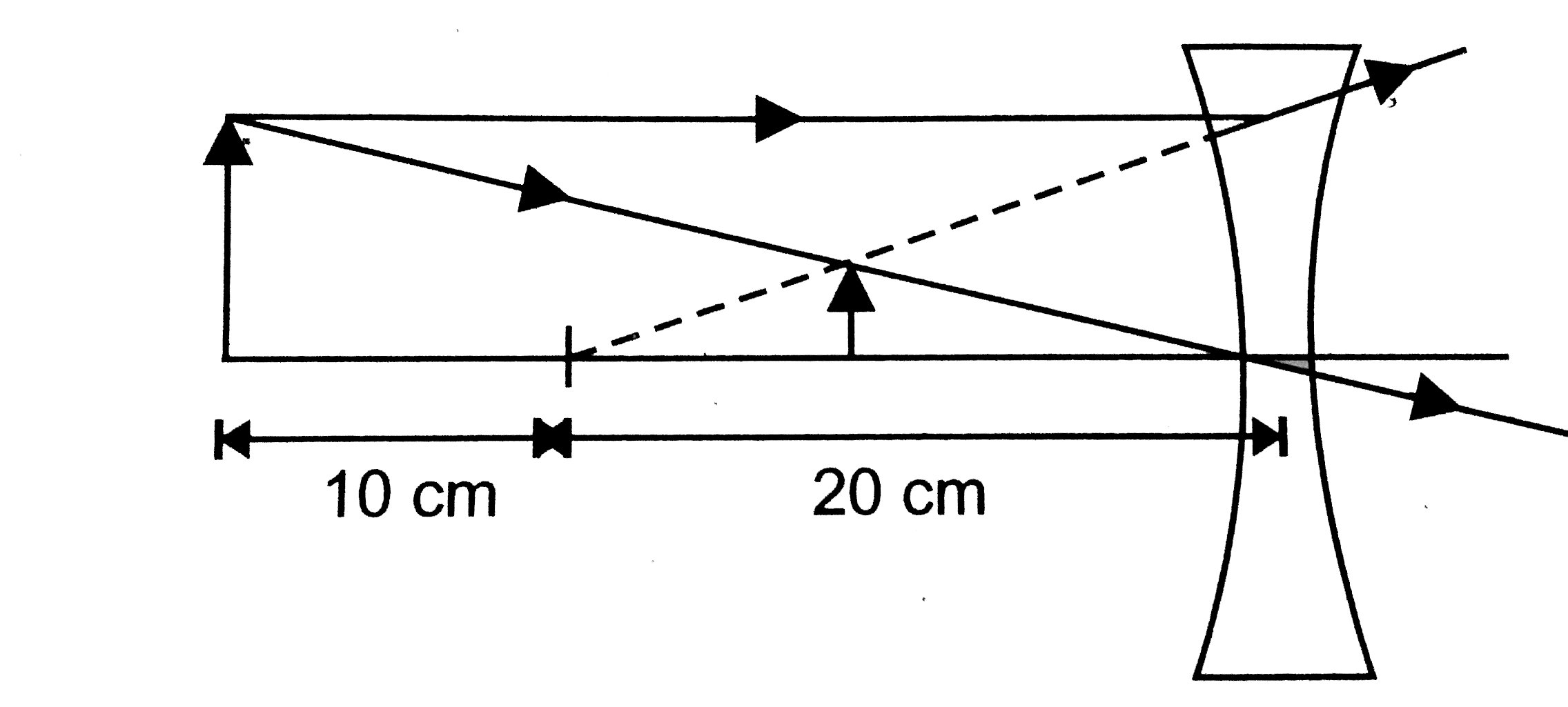An object is placed to the left of a diverging lens whose focal length is of magnitude . Which one of the following correctly states the nature and position of the virtual image formed ?
Nature of image inverted, enlarged , distance form lens to the right
Nature of image erect , diminished , distance form lens to the left
Nature of image inverted, enlarged , distance form lens to the left
Nature of image erect, diminished, distance form lens to the right
The correct Answer is:B
When an object is placed between and focal length of the diverging lens, the image is virtual, erect and diminished as shown in the graph. To compute the distance of the image from the lens, we apply
( to the left of the diverging lens.)

Topper's Solved these Questions
- GEOMETRICAL OPTICSBOOK - A2ZCHAPTER - GEOMETRICAL OPTICSEXERCISE - Prism Theory And Dispersion Of Light
45 Videos
- GEOMETRICAL OPTICSBOOK - A2ZCHAPTER - GEOMETRICAL OPTICSEXERCISE - Optical Instruments
55 Videos
- GEOMETRICAL OPTICSBOOK - A2ZCHAPTER - GEOMETRICAL OPTICSEXERCISE - Section D - Chapter End Test
30 Videos
- ELECTROMAGNETIC WAVES AND COMMUNICATION SYSTEM BOOK - A2ZCHAPTER - ELECTROMAGNETIC WAVES AND COMMUNICATION SYSTEM EXERCISE - Section D - Chapter End Test
30 Videos
- MAGNETISM AND MATTERBOOK - A2ZCHAPTER - MAGNETISM AND MATTEREXERCISE - Section D - Chapter End Test
30 Videos
Similar Questions
Knowledge Check
A biconvex lens has a radius of curvature of magnitude 20cm. Which one of the following options describes best the image formed of an object of height 2cm place 30cm from the lens ?
AVirtual, upright, height = 1 cmBVirtual, upright, height = 0.5 cmCReal, inverted, height = 4 cmDReal, inverted, height = 1cmA biconvex lens has a radius of curvature of magnitude 20cm. Which one of the following options describes best the image formed of an object of height 2cm place 30cm from the lens ?
AVirtual , upright, height =0.5cmBReal, inverted, height =4cmCReal, inverted, height =1cmDVirtual, upright, height =1cm
An object is placed 12cm to the left of a diverging lens of focal length −6.0cm. A converging lens with a focal length of 12.0cm is placed at a distance d to the right of the diverging lens. Find the distance d that corresponds to a final image at infinity.
View SolutionAn object is located 20 cm to the left of a diverging lens, having a focal length f=−32cm. Determine
the magnification of the image.
Given: u=20cmandf=−32cm
View SolutionA 10 cm tall object is placed perpendicular to the principal axis of a convex lens of focal length 12 cm. The distance of the object from the lens is 18 cm. Find the nature, position and size of the image formed.
View SolutionAn object is placed 20 cm to the left of a convex lens of focal length 10 cm. If a concave mirror of focal length 5cm is placed 30 cm to the right of the lens, find the magnification and the nature of the final image. Draw the ray diagram and locate the position of the image.
View SolutionA 0.5 cm high object is placed at 30 cm from a convex mirror whose focal length is 20 cm. Find the position and size of the image.
View SolutionAn object is placed at a distance of 50cm from a concave lens of focal length 20cm. Find the nature and position of the image.
View Solution
